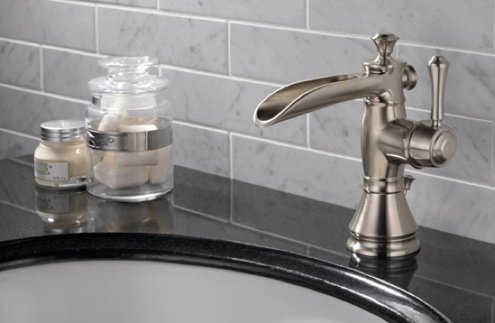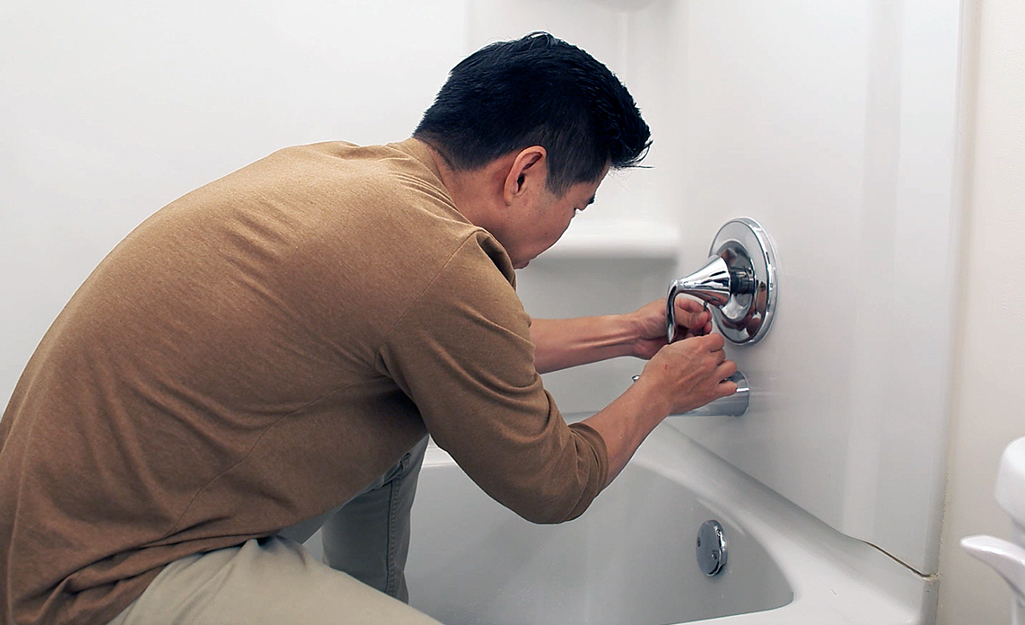Were you on the lookout for advise about Why Is It Important To Fix Your Leaking Tap/Faucet??

Dripping taps might seem like a minor inconvenience, but their impact exceeds just the inconvenience of the audio. From drainage to sustaining unneeded economic expenses and health threats, disregarding a trickling tap can cause numerous repercussions. In this article, we'll delve into why it's critical to resolve this usual house problem promptly and properly.
Waste of Water
Environmental Effect
Leaking faucets contribute considerably to water wastage. According to the Environmental Protection Agency (EPA), a single tap leaking at one drip per secondly can lose greater than 3,000 gallons of water annually. This not only pressures water sources but likewise influences environments and wildlife depending on them.
Financial Prices
Boosted Water Costs
Past the ecological impact, leaking faucets can pump up water expenses considerably. The accumulated waste in time converts into higher utility costs, which might have been avoided with timely fixings.
Prospective Residential Property Damages
Furthermore, long term dripping can cause harm to fixtures and surfaces bordering the faucet. Water accumulation can trigger discoloration, deterioration, and even structural issues if left ignored, leading to added fixing prices.
Health Concerns
Mold and Mildew Growth
The continuous presence of wetness from a leaking faucet creates an optimal atmosphere for mold and mildew growth. These fungi not only jeopardize interior air top quality yet also present health threats, particularly for individuals with breathing conditions or allergies.
Waterborne Diseases
Stationary water in leaking taps can end up being a breeding place for microorganisms and other virus, enhancing the threat of waterborne illness. Contaminants such as Legionella germs thrive in stagnant water, possibly leading to severe illnesses when ingested or breathed in.
DIY vs. Expert Fixing
Advantages and disadvantages of Do It Yourself Repair
While some may try to repair a leaking tap themselves, do it yourself repairs come with their own collection of obstacles. Without correct expertise and tools, DIY efforts can aggravate the problem or result in insufficient repairs, extending the trouble.
Benefits of Working With a Specialist Plumber
Hiring a specialist plumber guarantees that the underlying root cause of the leaking tap is addressed effectively. Plumbings possess the know-how and tools to identify and repair faucet issues successfully, conserving time and lessening the danger of further damages.
Step-by-Step Overview to Repairing a Dripping Faucet
Devices Needed
Before trying to take care of a dripping tap, gather the necessary devices, consisting of an adjustable wrench, screwdrivers, substitute parts (such as washing machines or cartridges), and plumber's tape.
Typical Tap Issues and Their Solutions
Determine the sort of faucet and the details issue triggering the drip. Common issues include damaged washing machines, corroded valve seats, or damaged O-rings. Refer to maker guidelines or online tutorials for step-by-step support on fixings.
Preventive Measures
Normal Upkeep Tips
To stop dripping faucets, do regular upkeep such as cleansing aerators, evaluating for leakages, and changing damaged components quickly. Furthermore, think about setting up water-saving devices or upgrading to more reliable components.
Value of Prompt Fixes
Attending to leaking faucets as quickly as they're observed stops additional water wastage and possible damages, ultimately conserving both water and money in the long run.
Influence On Building Worth
Perception of Well-Maintained Property
Keeping a residential property in good condition, including dealing with upkeep problems like trickling faucets, boosts its regarded value and desirability amongst possible purchasers or lessees.
Impact on Resale Worth
Features with well-maintained plumbing fixtures, including taps, command greater resale worths in the property market. Resolving leaking faucets can contribute to a favorable perception during home examinations and arrangements.
Environmental Obligation
Individual Contribution to Preservation
Taking responsibility for dealing with dripping faucets straightens with broader initiatives towards water conservation and ecological sustainability. Every person's actions jointly make a substantial influence on preserving valuable sources.
Lasting Living Practices
By focusing on prompt fixings and taking on water-saving behaviors, individuals contribute to sustainable living methods that profit both existing and future generations.
Final thought
Addressing a leaking faucet exceeds simple convenience; it's a crucial action towards conserving water, lowering economic expenses, and protecting health and wellness and home. Whether through do it yourself repairs or professional assistance, doing something about it to fix leaking faucets is a little yet impactful method to promote liable stewardship of sources and contribute to a much healthier, a lot more lasting future.
How to Fix a Leaky Faucet: Step-by-Step Repair Guide
A leaky faucet may seem like a simple annoyance, but if it's not fixed promptly, that leak could cost hundreds to potentially thousands. From water damage to mold, mildew, and high water bills, even a tiny leak can be catastrophic if left unattended. Damage like this can even affect the overall value of your home, so it's important to take the right approach for leaky faucet repair. You may need the help of a plumber in some cases, but we've got a few tips you can try on how to fix a leaky faucet before calling the pros.
Four Faucet Types
When you're learning how to fix a leaky faucet, the first step is knowing what kind of faucet you're working with! There are four common types.
Cartridge Faucets
Cartridge faucets come in one- or two-handled varieties. In one-handled cartridge faucets, hot and cold water combines in a single cartridge. In the two-handled versions, hot and cold water are controlled separately and mixed in the faucet.
Ball Faucets
Ball faucets have a single lever you push up and down to adjust the pressure and rotate to change the temperature. A slotted metal ball controls the amount of water allowed into the spout.
Compression Washer Faucets
They're the oldest type of faucet, but they're still used in many homes — especially older ones. Compression faucets have two separate handles that, when turned, raise or lower the washer that seals a water valve. This valve stops water from flowing through the faucet when it is turned off.
Disc Faucets
Disc faucets rarely need to be repaired due to their maintenance-free design. The water flow is controlled by two discs — the upper one raises and lowers against a fixed lower disc, creating a watertight seal. If your disc faucet starts leaking, you may need to replace the seals or clean residue buildup from the inlets.
Fixing a Leaky Faucet
Step 1: Turn Off the Water
Whether you're learning how to fix a leaky bathtub faucet or how to fix a leaky kitchen faucet, always turn off the water supply to your working area when you're fixing a leak. The last thing you want is a flood added to your list of things to fix.
Look for the shutoff valves below your sink or around the tub and turn them clockwise to stop the water flow. If your faucet doesn't have shutoff valves, you may need to turn off the water for the whole house. Check to make sure it's off by turning the faucet on. If nothing comes out, you're ready to start the repair.
Step 2: Take Apart the Faucet
How you disassemble your faucet depends on the type of fixture you have. You can use a flathead screwdriver to remove the caps on top of the handle or handles for cartridge and compression faucets. Inside, you should see handle screws. Unscrew these with a screwdriver to remove the handle.
Disc- and ball-style faucets will typically have an inlet screw near the handle, and removing that will reveal the interior of the faucet.
Detach the Valve Stem
For cartridge- and compression-style faucets, you'll see the inner valve stem or cartridge once you remove the faucet handles. If you have a compression faucet, unscrew the brass valve stem. If you have a cartridge faucet, pull out the cartridge. If your cartridge has been in place for a while, it may require some tools or extra force to remove it due to mineral deposits.
Examine and Replace Parts
Once you've removed the parts, check them out to confirm what needs to be replaced. You may see corroded rubber washers, O-rings, stems, or cartridges. On a ball-style faucet, check the seats and springs for damage.
If you need to repair a leaky disc faucet, check the inlet and seals on the lower disc.
Once you determine what parts must be replaced, visit your local hardware store. Bring the damaged parts with you to ensure you can purchase the correct components to replace them.
Clean Valves and Faucet Cavity
If you've removed a stem or cartridge, you may notice mineral buildup in the faucet's threads. Use white vinegar to clean the valve seat by soaking it for a few minutes, then scrub it away with a soft toothbrush and rinse with warm water. You can also clean the interior of the faucet in the same way.
Reassemble the Faucet
Once your faucet is cleaned and the required parts have been replaced, it's time to reassemble it. Put the pieces back together and slowly turn the water supply back on. Doing this slowly is crucial because too much initial water pressure can damage the new hardware you've just installed.
https://homewarranty.firstam.com/blog/how-to-fix-leaky-faucet

I was introduced to that article about from a good friend on a different domain. Appreciated our article? Please share it. Let someone else discover it. Many thanks for your time. Kindly come by our site back soon.